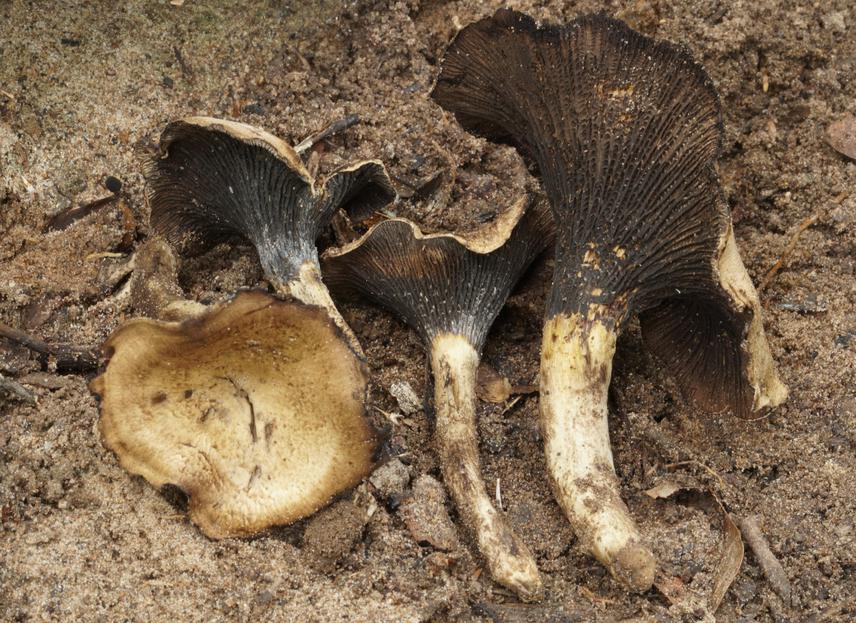Olyvia Gwladys Fadeyi
This project, which is intended to be the first on the genus Cantharellus of Benin aim to investigate the diversity followed by quantitative and sociological data on their use by local populations. Added to this is the modelling of ecological niche of this genus in order to simulate the potential distribution, to define and characterize the habitat of species of this genus. It also aims to identify two likely partner plants to use in reforestation degraded sites in these habitats. Also, it will be organized awareness-raising sessions to overcome the ignorance and the lack of information of the populations regarding the services provided by mushrooms to forests and their maintenance, and the harmful effects of local populations activities on the conservation and the preservation of chanterelles in particular and forests in general.

Cantharellus congolensis. © Ramdan Dramani.
Fungi are cosmopolitan heterotrophic organisms that are quite specific in their ecological requirements and having very important socio economic, cultural and above all ecological interests (Kumar & Sharma 2011). These interests are more bind in ectomycorrhizal fungi which live in symbiosis with woody species. Through their fruiting bodies, they are one of the Non-Timber Forest Product mostly used for local consumption in tropical Africa. Worldwide, the genus Cantharellus regroup the best-known and most appreciated species of Fungi. They are very important for rural livelihoods in developing countries due to their use in trading. With a specific richness of 60 species estimated for tropical Africa (Parent & Thoen 1977), 46 are actually known, i.e. 14 species probably unknown (Tibuhwa et al. 2012).
This project therefore proposes a diversity study of this genus in order to shedding light on the real diversity of chanterelle in Benin even though four are already classified as critically endangered (Cantharellus congolensis, Cantharellus guineensis, Cantharellus platyphyllus and Cantharellus conspicuus) according to IUCN criteria (Yorou & De Kesel 2011). Using an opportunistic collection method based online transects, systematic sampling of chanterelle fructifications will be made followed by their coordinates and habitat description. Additionally, ethnomycological surveys will be performed to document the endogenous knowledges related to the abundance, spatial and temporal availability of chanterelles and their socio-economic importance. Furthermore, for years to date in West Africa, the destruction of fungi’s habitats is still increasing through extensive agriculture, illegal logging, and charcoal production (Sinsin & Kampmann 2010).
So, through ecological niche modeling techniques, the potential distribution of chanterelles will be simulated in order to identify the quintessential conservation habitats of this genus. Using the likely symbiotic plant partners of chanterelles that will be identified, potential degraded habitats will be reforested for their reconstruction. The local populations who exploit these resources will therefore be associated to establish the participatory approach in order to promote efficient actions for their conservation. using posters, leaflets and picture-boxes as illustrations, mutual trainings and sensitizations will be organized in each village with local people, NGOs, and the forest offices on distribution trends, types of threats, and ecological needs for habitat.